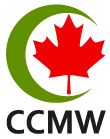
By Shahad Khalladi
“Alone we can do so little; together we can do so much.” Though being isolated from society due to her lack of sensory ability, Helen Keller’s insight on the strength brought on by community ties is crucial to our success. Finding allies with the same goals and establishing strong links is a driving force in resilience. It fills the gaps we find in ourselves and makes us whole. We feel security and a special calm knowing that we do not have to face our battles alone. And finally when our abilities come up too short, they are there to compensate with resources of their own. Even science agrees!
In the world of microbiology bacterial communities are found in two forms, colonies and biofilms. Genetically identical organisms living together are a colony, the simplest form of bacterial community. Whereas, a biofilm is a community with the potential for diversity, they are far more complex in structure and ability. The presence of diversity within the community changes the game completely. A
ability to withstand environmental stress can be up to 1000 folds than that of a colony. Diversity in our allies is our secret ingredient.
Studies of organism communities, in both diverse and non-diverse forms, have lead to the creation of the “insurance hypothesis”. The insurance hypothesis states “The presence of diverse subpopulations increases the range of conditions in which the community as a whole can thrive.” In other words, diversity in the membership of a group creates a stronger and more prosperous unit. Using this model, social communities similarly use allies to form more resilient bodies, capable of withstanding the changing environmental conditions.
When multiple sub-communities are faced with the same external pressures, depending on ”ally-ship” proves to be an effective method in braving the storm. With proper coordination, the multiple strengths and weaknesses of each sub-community can be used collectively as a solution to the crisis. One group may possess a vast amount of relevant information, another possesses a large number of individuals, and a third possesses material resources. Individually they are capable of a basic form of resistance, much like the colony. This resistance may wane with the continued erosion from environmental stress. However, conjointly the sub-communities are able to pool their resources and establish a more efficient framework of resistance.
This new structure now possesses all the strengths of the individual communities. Where one lacked in ability before, it is now strong. Of course it is important to keep in mind when assigning the roles each group plays, the specialization of the group are taken into account. Such process insures the efficiency of the structure. Each sub-community can now play a more potent role in the body’s resistance of external forces. In Biofilms the diversity of the whole population plays out the same way; certain types of bacteria are able to establish a network of communication, while other possess the ability to give the community an antibiotic resistance. Through collaborative work the capacities of the individual are translated into the capacities of the whole. In turn, being part of a connected body now compensates the weaknesses of the individual communities. Truly, together we can do so much more.

